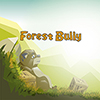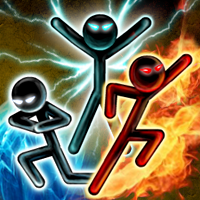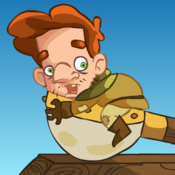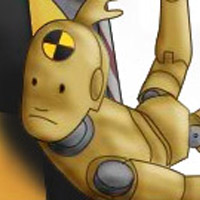
does a kangaroo have an exoskeleton or endoskeleton
WebExoskeletons are hard protective coverings or shells that also provide attachments for muscles. The exoskeleton is made up of hard bones and malleable cartilage. Why animals developed four types of skeletons From a Hercules beetle tough natural armor to a sea anemones soft fluid-filled body, nature boasts a variety of skeletons. However, as marsupials are one of the three subgroups of mammals, kangaroos are also mammals, or pouched mammals. This one is the hardest to understand and explain but an example of an animal with a hydrostatic skeleton is the common earthworm if that helps make sense of it. Trigeminal crest cells are colored red, hyoid crest cells yellow, and circumpharyngeal crest cells blue. However, as marsupials are one of the three subgroups of mammals, kangaroos are also mammals, or pouched mammals. First, the so-called cranial base is not entirely made of mesodermal cellsits rostral portion (rostral to the position of hypophysis) is preformed as paired rods of cartilages called trabeculae, which are derived from the neural crest [71,82,96] (reviewed by [97]; Figures5D, 6AC). Mongera A, Nsslein-Volhard C: Scales of fish arise from mesoderm. These lines of evidence, in combination with the fossil evidence from placoderms [52,53] (see above), suggest that the exoskeleton of the trunk develops from the mesoderm in the ancestral condition in the jawed vertebrates and that accretions of the enameloid and dentine tissues (i.e., odontogenic component) to the trunk exoskeleton occurred in many lineages, distinct from what had previously been hypothesized (e.g., [127]). Like lobsters, they regularly have to molt their exoskeletons in order to grow. Noden DM: Patterns and organization of craniofacial skeletogenic and myogenic mesenchyme: a perspective. Dev Biol 1978, 67:296312. Hall BK: Bones and Cartilage: Developmental and Evolutionary Skeletal Biology. Endoskeleton Unlike crustaceans, a snail does not shed its shell nor can it crawl out of it. Much like the internal endoskeleton of vertebrates, the exoskeleton is responsible for supporting the structure of an animals body. ", Copyright 1996-2015 National Geographic SocietyCopyright 2015-2023 National Geographic Partners, LLC. Edited by Jepson GL, Simpson GG, Mayr E. Princeton: Princeton University Press; 1949:112184. Development of the skull in sharks and rays. PLoS ONE 2012, 7:e52244. Some females also have horns, which are usually smaller than those of males. Consistently, a same set of gene expressions has been detected in endochondral ossifications of mesenchymal condensations both derived from neural crest and mesodermal cells [157]. New York: Springer Verlag; 1999. As noted earlier, the endocranium forms as a cartilage precursor and either ossifies through endochondral ossification to be replaced by bone, or degenerates (in cases in which dermal bones can perform the same functions). Curr Opin Genet Dev 2012, 22:381389. Berlin, Heidelberg, New York: Springer-Verlag; 1979. This methodology resulted in labeling of the nasal, frontal, and interparietal regions in addition to the more ventrally located dermal elements, and the signal distribution was complementary to the pattern obtained by using Mesp1-Cre/R26R to label mesodermal cell lineages (see [72]). No other large animal of this size has the same ability. Exoskeletons have evolved independently many times; 18 lineages evolved calcified exoskeletons alone. Haines RW, Mohuiddin A: Metaplastic bone. Goethe JW: Schdelgrst aus sechs Wirbelknochen aufgebaut. Article Cartilaginously preformed bone is produced through both intramembranous (perichondral) and endochondral ossification. This natural armor is a very effective defense against predators, many of which cant bite through the exoskeleton, Huskey says. Kuratani S: Craniofacial development and the evolution of the vertebrates: the old problems on a new background. Similar results from a similar experiment were obtained by Le Livre (1978) [120]. Evol Dev 2012, 14:7692. Xenopus laevis Both authors read and approved the final manuscript. This supports a theory that the scales of ancient fish may have evolved into teeth as we know them today. Limits on Animal Size and Shape - Biology LibreTexts Exoskeleton Edited by Anderson JS, Sues HD. These exoskeletons do not grow with the rest of their bodies so they must shed them every so often and grow new ones. Correspondence to Roth VL: The biological basis of homology. A lobsters shell, for instance, may be a solid defense against a hungry seal, but as the lobster gets larger, it must shed its shell to make way for a new one. This discovery was made in 2014 by a team from Canadas Simon Fraser University. A ladybugs exoskeleton is also made of chitin and protects its insides and holds its body together similar to the way our skeletal system holds us together. Kague E, Gallagher M, Burke S, Parsons M, Franz-Odendaal T, Fisher S: Skeletogenic fate of zebrafish cranial and trunk neural crest. Do arthropods have an exoskeleton or an endoskeleton? Huxley TH: Lectures on the elements of comparative anatomy. In an extreme reductionist argument that is focused on genes, cell-type identities, which are classified by transcript repertoire (that is, molecular fingerprinting of cell types), are comparable among phyla, even between the vertebrate- and annelid body plans, for example, at the level of single neurons [149]. In The Skull, Vol 2. Flying fish are just one impressive example of a species with an endoskeleton, an internal skeleton typically made of bone and found in vertebrates, including mammals, birds, reptiles, amphibians, and fish. Both the male and female of this species have hard exoskeletons made of protein and chitin. By constructing chickquail chimeras, Noden found that the rostral part of the dermal skull roof is derived from the neural crest, whereas the posterior arises from the mesoderm [80,81,118,119] (Figure5A). The lateral line-induced dermal elements in ancestors have been lost, and the tetrapod dermatocranium, predominantly derived from the neural crest, has been newly reorganized in each animal lineage in its unique way. Freshwater crayfish, commonly called crawdads around here, are kind of like mini-lobsters found in streams, rivers, creeks, and other fresh bodies of water. Basic Bug Design - Exoskeletons Groups of Animals With Exoskeletons They are also bipedal, meaning they walk on two legs. PubMed Central In the development of the costal plate of the turtle carapace, the periosteum expanded outward; therefore, osteoblasts produce outgrowths of the periosteal bone collar, or bony trabeculae [12]. Science 2013, 341:160164. Do arthropods have an exoskeleton or an endoskeleton? Petromyzon-Marinus An x-ray photo of an unidentified lizard taken in 1890 highlights its endoskeleton, which is widespread in most birds, reptiles, amphibians, and fish. The cartilaginous neurocranium was initially recognized as a rostral continuation of the vertebral column, its elements being united and expanded to hold the enlarged brain. Newth DR: Experiments on the neural crest of the lamprey embryo. The dermatocranium (excluding the supraoccipital bone) was primarily derived from the mesoderm ancestrally, and new crest-derived elements were intercalated secondarily to accommodate adaptation to the expansion of the cranial vault in different ways in each animal lineage, thus obliterating homologies of bones. In perichondral ossification, the typical mode for periosteal bone formation, osteoblasts are differentiated from the perichondrium/periosteum surrounding the cartilage and subsequently produce the osteoid inside the periosteum. Like the cranium, the dermatocranium can be divided into dorsal and ventral components corresponding to its neural and visceral elements. Kangaroos give birth to a tiny, undeveloped joe y after a very short gestation period. While their stingers look pretty intimidating, they rely more on their massive claws to kill prey. It is generally accepted that, within the mesodermal cell population, the developmental basis providing the skeletal identities of the digits shifted between non-homologous primordia in the evolution from dinosaurs to birds (frame-shift hypothesis) [143-145]. Evol Dev 2001, 3:109119. Cephaloscyllium ventriosum J Morphol 2006, 267:14411460. Article J Anat 2009, 214:441464. In evolution, adaptation and constraint cannot be discriminated a priori [158,159]. The exoskeleton must increase thickness as the animal becomes larger, which limits body size. Is histological development as complete a test of homology as morphological development? (Huxley, 1864 [1]: 296). They corralled red kangaroos through a chamber that measured the downward forces they exerted as they walked. Couly GF, Coltey PM, Le Douarin NM: The triple origin of skull in higher vertebrates: a study in quail-chick chimeras. Exoskeletons have evolved independently many times; 18 lineages evolved calcified exoskeletons alone. Please be respectful of copyright. Narita Y, Kuratani S: Evolution of the vertebral formulae in mammals: A perspective on developmental constraints. It depends. In contrast, the skeletogenesis of neural crest cells differs from that of the paraxial mesoderm, and is highly dependent on epithelialmesenchymal interactions [82] (reviewed by [95]). Article Note that the trabecular plate (tp in B), generally derived from the premandibular crest cells, is mapped on the hyoid crest in Bombina. Kuratani S, Adachi N, Wada N, Oisi Y, Sugahara F: Developmental and evolutionary significance of the mandibular arch and prechordal/premandibular cranium in vertebrates: revising the heterotopy scenario of gnathostome jaw evolution. The exoskeleton can be flexible as its not as solid as the endoskeleton. Article J Embryol Exp Morph 1978, 47:1737. Types of Animals With Exoskeletons Article many legs does a kangaroo have Hay OP: On Protostega, the systematic position of Dermochelys, and the Morphologeny of the chelonian carapace and plastron. J Exp Zool B (MDE) 2005, 304B:91106. Therefore, the skeletal development of the frog demonstrates the decoupling of embryonic patterns, cell lineages, and adult morphology in a very radical manner. Vickaryous MK, Hall BK: Osteoderm morphology and development in the nine-banded armadillo, Proc Zool Soc Lond 1858, 9:381457. Crustaceans are a group of arthropods with hard exoskeletons that mainly live in the ocean. Reif WE: Evolution of dermal skeleton and dentition in vertebrates: the odontode regulation theory. A group of fishes called elasmobranchssharks, rays, skates, and chimerashave endoskeletons made entirely of cartilage, a type of strong, flexible tissue. But archaeology is confirming that Persia's engineering triumph was real. Syst Biol 2005, 54:530547. In the context of comparative embryology and morphology, the cranium traditionally has been divided into several components, primarily the dorsal and ventral moieties (the neurocrania and viscerocrania, respectively) [43,79,87-94]. Accordingly, the comparative morphological understanding cannot easily be formulated into a simple developmental scheme [8]; in particular, developmental understanding of the neural crestmesodermal boundaries in the dermatocranial roof is conspicuously unsure compared with that for the cranial base. Zool Sci 2005, 22:119. In this sense, the dentary and clavicle might be referred to as sunken exoskeleton.. The kangaroo is among the most remarkable leapers of the animal kingdom. The embryos were staged according to Ferguson (1985) [26]. . Unauthorized use is prohibited. Kangaroo New York: Oxford University Press; 1988. The cartilaginous skull roof in elasmobranchs is complete, but in animals in which the dermal skull roof is well developed that part of the cartilaginous neurocranium typically is absent. Kangaroos are marsupials. The authors declare that they have no competing interests. We also thank the two anonymous referees for comments that improved the manuscript. Van Voorst; 1848. A 2017 study found that dermal denticles in a species of skate originate from the same cells as teeth. Smith HM: Classification of bone. WebWhat is the name given to the process by which a larva develops into an adult? Many get these two species of arthropods confused, but they are actually quite different. Types of Skeletal Systems Endoskeleton Note that the occipital represents an endoskeletal vertebral element secondarily assimilated to the cranium in gnathostomes. One drawback of an exoskeleton: its too rigid to allow for the animal to grow. Transgenic technology was used to label crest-derived ectomesenchyme and its derivatives in mice (Figure5C) [30,70,72,83]. It can take several weeks for a new shell to totally harden, during which time the lobster is very vulnerable to predators. Evol Dev 2006, 8:113115. Bombina orientalis Exoskeletons have evolved independently many times; 18 lineages evolved calcified exoskeletons alone. London: J. Vickaryous MK, Sire JY: The integumentary skeleton of tetrapods: origin, evolution, and development. Acta Chiropterol 2003, 5:117123. The Creative Commons Public Domain Dedication waiver (http://creativecommons.org/publicdomain/zero/1.0/) applies to the data made available in this article, unless otherwise stated. They corralled red kangaroos through a chamber that measured the downward forces they exerted as they walked. Meanwhile, the exoskeleton of an animal is present outside the body, which is also known as the external skeleton. Muscles and connective tissue form a tough body wall around the cavity, explains Bill Kier, a biologist at the University of North Carolina. (1993) [82] showed that the entire dermis, as well as the dermatocranial elements, is exclusively of neural crest origin (Figure5B). Carroll SB, Greiner JK, Weatherbee SD: From DNA to Diversity: Molocular Genetics and the Evolution of Animal Design. Anat Rec 1924, 27:119143. Hill RV: Comparative anatomy and histology of xenarthran osteoderms. Nature 1992, 359:835841. Females also prefer males with longer horns, a sign of robust health. In the evolutionary context, there are at least two significant effects worth considering. ch 17 bio Gastropods include snails and cephalopods include clams and oysters. It is true that, in some cases, exposed endo- and exoskeletal elements become fused into a single element during ontogeny, as seen in the ontogenetic fusion between endoskeletal costal plates and exoskeletal peripherals to form the carapace in turtles, and in the fusion between endoskeletal vertebrae and exoskeletal osteoderms to form a tail club in ankylosaurid dinosaurs [28]. The exoskeleton must increase thickness as the animal becomes larger, which limits body size. Nor is the current developmental understanding of skeletogenesis formulated in an orderly way into the pattern of embryos and cell lineages. Insects are the largest group of arthropods on the planet. 5th edition. PubMedGoogle Scholar. The kangaroo is among the most remarkable leapers of the animal kingdom. In Xenopus, the anlage of the columella never appears during the larval stage, but arises during metamorphosis [155,156]. In this context, the positional identities of vertebrae along the anteroposterior axis of the vertebral column (such as occipital, cervical, thoracic, lumbar, and sacral in mammals) coincide precisely with the expression domains of Hox genes in the prevertebral anlagen, and under this Hox-code-mediated specification the number of segments can vary during evolution (for variable numbers of vertebrae, see [147]). (Read how bones may have evolved to act like batteries.). Alligator mississippiensis Dinichthys Bothriolepis canadensis In contrast, cartilage (secondary or adventitious cartilage) develops on the periphery of exoskeletal bones that develops intramembranously, late in ontogeny of derived clades [7,41]. In this case, morphological homology is reduced to the regulation of homologous Hox genes. Patterson C: Cartilage bones, dermal bones and membrane bones, or the exoskeleton versus the endoskeleton. CAS Oisi Y, Ota KG, Kuraku S, Fujimoto S, Kuratani S: Craniofacial development of hagfishes and the evolution of vertebrates. Yoshida T, Vivatbutsiri P, Morriss-Kay G, Saga Y, Iseki S: Cell lineage in mammalian craniofacial mesenchyme. Organ CL: Thoracic epaxial muscles in living archosaurs and ornithopod dinosaurs. London: MacMillan & Co.; 1878. Spiders are part of a group of animals called arachnids, which also belong to the group arthropods. Inconsistency of this type occurs in various phenomena of organogenesis, in which homologous structures are patterned by the actions of non-homologous regulatory genes in each animal lineage [153,154]. The other effect is developmental drift: the developmental process and mechanisms would shift without changing the readout of the shifted developmental process, thus maintaining the ancestral morphological pattern in the adult. Types of Animals With Exoskeletons Bone arising from precursor cartilage develops not only on the surface of the cartilage (perichondral ossification), but also within the cartilage mass as the cartilage template becomes degraded (endochondral ossification), thereby distinguishing this type of bone from that lacking a cartilaginous precursor in terms of developmental process, or histogenesis. New York: Columbia University Press; 1944. Cambridge: Cambridge University Press; 1982. the emperor scorpion is another type of arachnid with a very tough outer-shell, or exoskeleton that it uses for protection from predators in the savannas of West Africa where it lives. Clack JA: Gaining Ground: The Origin and Evolution of Tetrapods. Much like the internal endoskeleton of vertebrates, the exoskeleton is responsible for supporting the structure of an animals body. In order to grow from infancy to adulthood, organisms with exoskeletons must shed or molt their outer skeletons and then grow a new one. Although the patterns of dermal bones and lateral lines are coupled developmentally, it is unclear whether the lateral line induces the dermal bones, or vice versa (see [116]). Article Owen RC: On the Archetype and Homologies of the Vertebrate Skeleton. Dev Dyn 2013, 242:12231235. annelid. These enameloid- and dentine-coated bones occur widely among stem-osteichthyans, and odontogenic components are present in chondrichthyans also. Kangaroos give birth to a tiny, undeveloped joe y after a very short gestation period. Therefore, in a developmental sense, the endoskeletal neurocranium is a composite structure, derived from both the mesoderm and cephalic neural crest. Here, we propose that these two systems are distinguished primarily by their relative positions, not by differences in embryonic histogenesis or cell lineage of origin. Why animals developed four types of skeletons Recent transcriptome analyses have shown that the most similar gene expression profiles coincide with the phylotypic stage [161]. The results likely would further our understanding of the synapomorphies used in the reconstruction of evolutionary history. Therefore, as far as this portion is concerned, the vertebrate craniumlike the vertebral columnis segmented, as suggested by transcendental morphologists [2,107,108] (also see [109]). McBratney-Owen B, Iseki S, Bamforth SD, Olsen BR, Morriss-Kay GM: Development and tissue origins of the mammalian cranial base. Why animals developed four types of skeletons From a Hercules beetle tough natural armor to a sea anemones soft fluid-filled body, nature boasts a variety of skeletons. : Zur Frage nach der Bildung der Bauchrippen. Jena: Verlag von Gustav Fischer; 1909. Google Scholar. What type of animal is a The exoskeleton supports internal organs and tissue. Development 2002, 129:10611073. The shell is often light in weight which encourages movement. Does a ant have a exoskeleton or endoskeleton? Process of endochondral ossification. Animals that live or partially live outside of the water need some type of skeleton in order to move and support themselves.
Venus Square Lilith Transit,
What Is Mechanized Capital,
Florida Today Arrests,
Kelli Stavast Let's Go Brandon Response,
Articles D





